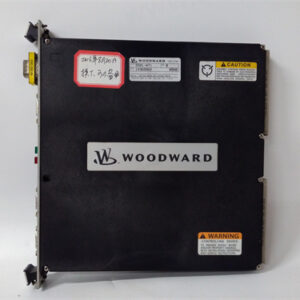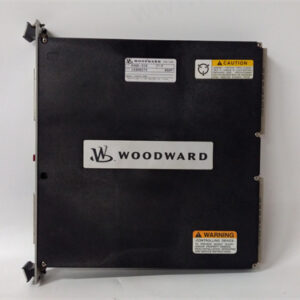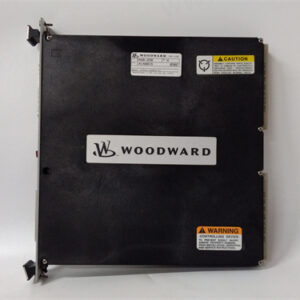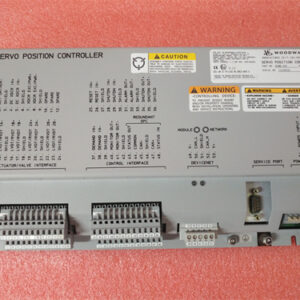الوصف
The WOODWARD 9907-1253 is not a mechanical actuator in the traditional sense. It is a sophisticated CPC-II Current-to-Pressure Converter, which acts as a crucial interface in industrial control systems.
WOODWARD 9907-1253: CPC-II Current-to-Pressure Converter
The WOODWARD 9907-1253 is an electrohydraulic pressure-regulating valve control. Its primary purpose is to accurately translate an electrical control signal (specifically a 4-20 mA current signal) into a precise hydraulic pressure output. This controlled hydraulic pressure is then used to accurately position single-acting steam turbine governor valves.
Product Overview
This particular part number represents a specific configuration within Woodward’s advanced CPC-II (Current-to-Pressure Converter, Generation II) series. CPC-II units are renowned for their high accuracy, resolution, and rugged construction, making them ideal for demanding industrial environments.
- Product Type: Current-to-Pressure Converter / Electrohydraulic Pressure-Regulating Valve Control
- Manufacturer: Woodward
- Part Number: 9907-1253
- Model Designation: CPC-II
- Function: Converts a 4–20 mA pressure demand signal from an electronic controller (like a turbine controller or Distributed Control System – DCS) into a precisely regulated hydraulic oil pressure. This controlled pressure then drives single-acting steam turbine governor valves.
- Output Pressure Range: 0 to 25 bar (0 to 363 psi).
- Design Specifics: This model is designed for single-acting operation, meaning it controls pressure to move a valve in one direction, relying on a spring for the return force. It is also suitable for use in Zone 2 hazardous environments and offers dual redundant capability for enhanced reliability.
Detailed Product Description
Woodward’s CPC-II series, including the 9907-1253, is engineered for high performance and reliability, especially in critical steam turbine applications. Key features and characteristics include:
- Precise Pressure Control: The unit features a highly accurate internal pressure sensor and an advanced PID (Proportional-Integral-Derivative) controller. This combination ensures precise and stable control over the output oil pressure, directly leading to accurate positioning of the turbine valve.
- “Dirt Buster” Technology: A significant innovation in the CPC-II is its robust design, often referred to as “Dirt Buster” or “Silt Buster” technology. It incorporates a strong actuator, corrosion-resistant materials, a unique single-moving rotary valve, and a self-cleaning port design. This technology makes it exceptionally resistant to dirty or contaminated oil (capable of handling up to ISO20/16 cleanliness levels), a common issue in hydraulic systems, thereby boosting reliability by preventing silt buildup without interrupting operation.
- Enhanced Dynamics: The CPC-II is designed with enhanced dynamics, enabling rapid and stable responses to changes in control signals. This quick and precise response is crucial for effective turbine speed and load control.
- Redundancy Capabilities: The 9907-1253 model specifically supports dual redundant inputs/sensors and can be configured for dual-redundant (master/slave) CPC applications. This significantly improves system reliability and availability in critical applications where continuous turbine operation is paramount.
- Fail-Safe Mechanism: In the event of an internal unit failure (such as loss of electrical input power, pressure sensor failure, or processor failure), an internal valve-return-spring forces the CPC to a failsafe position. For this specific model, this typically ensures the safe closure of turbine control valves.
- Manual Stroke Function: It includes a manual stroke screw, which allows for local, manual adjustment of the output pressure (and thus the turbine valve position) for maintenance or emergency situations. It can also be controlled remotely or locally via a PC-based service tool.
- Diagnostic Features: The CPC-II provides various status indications, including pressure sensor health, input demand signal health, internal unit health, and input power quality. These features enable operators to effectively monitor its operational status.
- Certifications: As a product designed for industrial environments, it carries relevant certifications for hazardous area classifications (e.g., ATEX, IECEx, and CSA for Zone 2).
Technical Specifications
Typical Applications
The WOODWARD 9907-1253 CPC-II Current-to-Pressure Converter is primarily utilized in heavy industrial applications that demand precise and stable control of steam valves:
- Steam Turbine Valve Control: Its core application involves accurately positioning the control valves of single-acting steam turbines, which directly regulates steam flow and, consequently, impacts turbine speed and power generation.
- Turbine Speed and Load Control: By precisely controlling steam admission, it directly contributes to the stable regulation of turbine speed and the efficient management of electrical load in power generation.
- Power Generation Plants: It is a key component integrated into the control systems of steam power plants, particularly where high reliability and redundancy are critical.
- Petroleum and Chemical Industries: Used in processes that rely on steam turbines for power or compression.

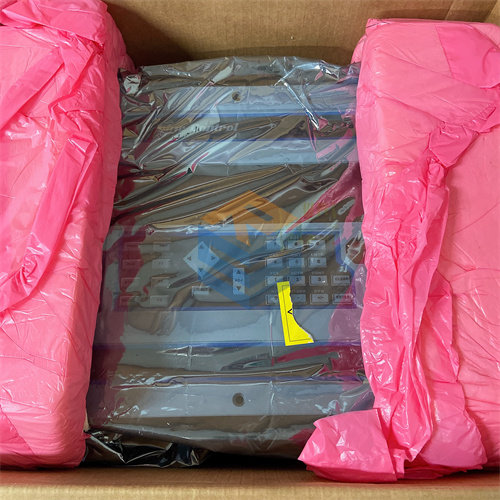

 +86 15340683922
+86 15340683922 +86 15340683922
+86 15340683922